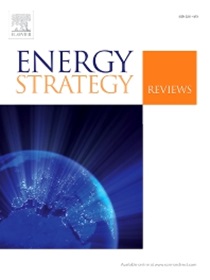How does the penetration of new energy vehicles affect global energy security? Empirical evidence from multiple countries
IF 7.9
2区 工程技术
Q1 ENERGY & FUELS
引用次数: 0
Abstract
In the context of global Energy Security (ES) challenges, New Energy Vehicles (NEVs) have garnered significant attention as a pivotal technology for catalyzing the energy transition, fortifying ES, and curtailing reliance on fossil fuels. However, the specific impact of New Energy Vehicle Penetration (NEVP) on ES and the underlying mechanisms remains underexplored. Using panel data from 45 countries between 2010 and 2022, this study employs a two-way fixed effects model, a random forest model, a spatial Durbin model, and a threshold effect system analysis to examine the impact of NEVP on ES. The results show: (1) NEVP significantly improves national ES, with results remaining robust after robustness and endogeneity tests; (2) Energy transition, technological innovation, and charging infrastructure play important mediating roles; (3) NEVP exhibits a “siphoning effect,” generating negative spatial spillover effects on neighboring countries’ ES; (4) The positive impact on ES is significant when NEVP is below 5.8%, but diminishing returns occur beyond this threshold due to grid pressure and infrastructure bottlenecks; (5) In developing countries, NEVP has a significantly stronger impact on ES compared to developed countries; Hybrid Energy Vehicles (HEV) have a stronger effect on ES than Battery Energy vehicles (BEV). Based on these findings, the study recommends that governments promote NEV adoption, strengthen infrastructure, support technological localization and green innovation, and implement differentiated policies to enhance ES and avoid diminishing returns.

新能源汽车的渗透如何影响全球能源安全?来自多个国家的经验证据
在全球能源安全(ES)挑战的背景下,新能源汽车(nev)作为催化能源转型、加强ES和减少对化石燃料依赖的关键技术受到了广泛关注。然而,新能源汽车普及率(NEVP)对ES的具体影响及其潜在机制仍未得到充分探讨。本研究利用2010 - 2022年45个国家的面板数据,采用双向固定效应模型、随机森林模型、空间Durbin模型和阈值效应系统分析来考察新政策对ES的影响。结果表明:(1)NEVP显著提高了国家ES,经稳健性检验和内生性检验,结果保持稳健性;(2)能源转型、技术创新和充电基础设施具有重要的中介作用;(3)新经济政策呈现“虹吸效应”,对周边国家的经济环境产生负空间溢出效应;(4)当NEVP低于5.8%时,对ES的正向影响显著,但超过该阈值后,由于电网压力和基础设施瓶颈,收益递减;(5)与发达国家相比,发展中国家的新政策对ES的影响明显更强;混合动力汽车(HEV)比纯电池汽车(BEV)对ES的影响更大。基于这些发现,研究建议各国政府促进新能源汽车的采用,加强基础设施建设,支持技术本土化和绿色创新,并实施差异化政策以提高环境效益,避免收益递减。
本文章由计算机程序翻译,如有差异,请以英文原文为准。
求助全文
约1分钟内获得全文
求助全文
来源期刊

Energy Strategy Reviews
Energy-Energy (miscellaneous)
CiteScore
12.80
自引率
4.90%
发文量
167
审稿时长
40 weeks
期刊介绍:
Energy Strategy Reviews is a gold open access journal that provides authoritative content on strategic decision-making and vision-sharing related to society''s energy needs.
Energy Strategy Reviews publishes:
• Analyses
• Methodologies
• Case Studies
• Reviews
And by invitation:
• Report Reviews
• Viewpoints
 求助内容:
求助内容: 应助结果提醒方式:
应助结果提醒方式:


